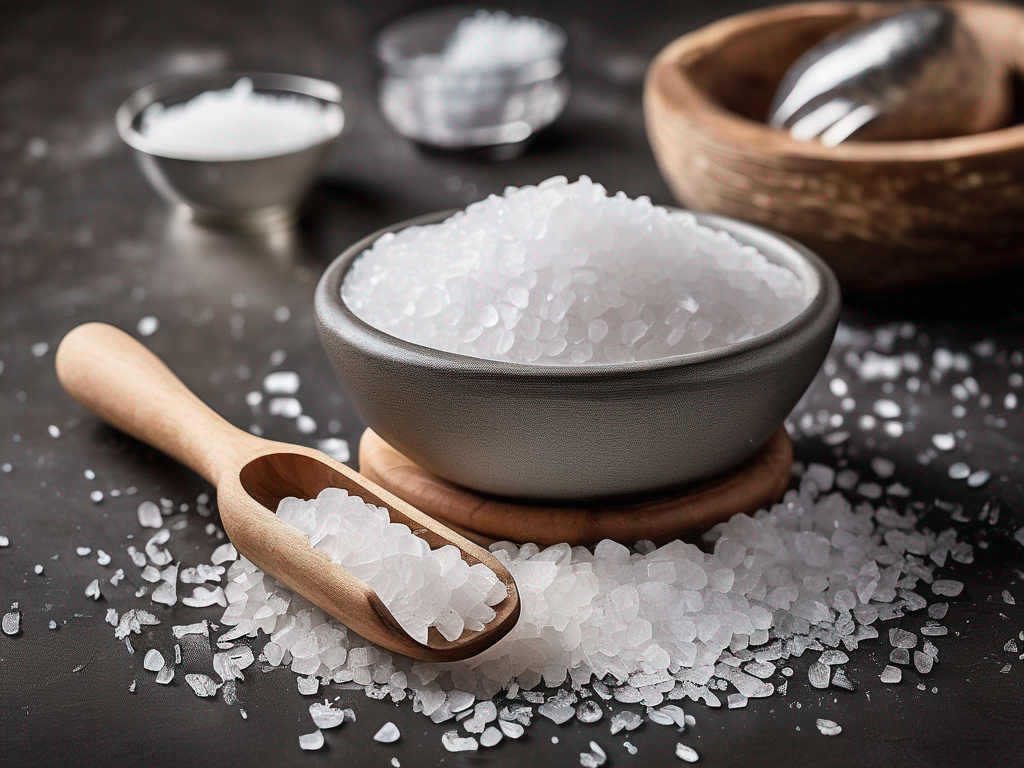
The Best Methods for Storing Fleur De Sel to Maintain Freshness
Get Your Free Food Safety Cheat Sheet
30 most common foods with instant answers. Print it and stick it on your fridge—completely free!
The Best Methods for Storing Fleur De Sel to Maintain Freshness
Fleur de Sel, often referred to as the "caviar of salts," is a premium sea salt known for its delicate flavor and unique texture. Harvested by hand from salt evaporation ponds, this gourmet salt is prized for its purity and high mineral content. To fully enjoy the exceptional qualities of Fleur de Sel, proper storage is essential to maintain its freshness and flavor integrity. (Fleur de sel)
Importance of Proper Storage for Fleur De Sel
Proper storage of Fleur de Sel is crucial to preserve its delicate structure and prevent it from clumping or absorbing moisture. Here are some key reasons why storing Fleur de Sel correctly is essential:
Retaining Flavor and Texture
- Fleur de Sel is valued for its subtle briny flavor and light, flaky texture.
- Proper storage helps preserve these qualities, ensuring that the salt remains flavorful and retains its signature crunch.
Preventing Moisture Absorption
- Fleur de Sel is hygroscopic, meaning it readily absorbs moisture from the environment.
- Exposure to humidity can cause the salt to clump together, leading to a deterioration in quality.
Avoiding Contamination
- Proper storage methods help protect Fleur de Sel from contamination by external odors or impurities.
- Keeping the salt in a clean, airtight container minimizes the risk of spoilage and maintains its purity.
Best Practices for Storing Fleur De Sel
To ensure the longevity and quality of your Fleur de Sel, follow these best practices for storage:
1. Choose the Right Container
- Use a container made of glass, ceramic, or food-grade plastic to store Fleur de Sel.
- Avoid metal containers, as the salt can react with metal surfaces and affect its taste.
2. Keep it Airtight
- Seal the container tightly to prevent moisture from entering and causing clumping.
- Airtight containers also help preserve the salt's freshness and flavor.
3. Store in a Cool, Dry Place
- Keep Fleur de Sel away from heat sources and direct sunlight.
- Store the salt in a cool, dry place, such as a pantry or cupboard, to maintain its quality.
4. Use Silica Gel Packs
- Place silica gel packs in the container to absorb excess moisture and prevent clumping.
- Silica gel packs help maintain the texture of Fleur de Sel and extend its shelf life.
5. Avoid Refrigeration
- Avoid storing Fleur de Sel in the refrigerator, as the salt can absorb moisture from the fridge.
- Refrigeration can alter the texture and flavor of the salt, compromising its quality.
Additional Tips for Storing Fleur De Sel
In addition to the best practices mentioned above, here are some extra tips to help you store Fleur de Sel effectively:
- Regularly Check for Moisture
- Periodically check the salt for any signs of moisture or clumping.
- If moisture is present, transfer the salt to a new, dry container and add fresh silica gel packs.
- Do Not Transfer to a Salt Pig
- While salt pigs are popular for tableside salt serving, they are not ideal for storing Fleur de Sel long-term.
- Opt for a sealed container to maintain the salt's freshness and prevent moisture absorption.
Conclusion
Proper storage is key to preserving the freshness and quality of Fleur de Sel, ensuring that you can enjoy its exquisite flavor and texture to the fullest. By following the best practices outlined in this guide and implementing additional tips for effective storage, you can extend the shelf life of your Fleur de Sel and enhance your culinary creations with this exceptional gourmet salt. Remember, a little care in storage goes a long way in maintaining the integrity of this prized ingredient.
For more information about Fleur de Sel and other gourmet salts, visit [here](/food/fleur de sel). (Fleur de sel)
Authoritative Food Safety References
These agencies and university labs inform every tip and health precaution we publish.
USDA FoodKeeper – Cold Storage Guidelines
Official refrigerator, freezer, and pantry timelines maintained by the U.S. Department of Agriculture.
Visit USDA FoodKeeperFDA Produce Safety Rule & Grower Guidance
Field-to-fridge handling practices that prevent contamination of fruits, vegetables, and leafy greens.
Visit FDA Produce SafetyCDC Foodborne Illness Prevention Hub
Surveillance-backed guidance on pathogens, symptoms, and steps to reduce foodborne illness risk.
Visit CDC Food SafetyUC Davis Postharvest Technology Center
University research detailing optimal storage atmospheres for produce after harvest.
Visit UC Davis PostharvestPenn State Extension – Home Food Preservation & Safety
Peer-reviewed extension bulletins on safe canning, chilling, and reheating practices.
Visit Penn State ExtensionGet Your Free Food Safety Cheat Sheet
30 most common foods with instant answers. Print it and stick it on your fridge—completely free! Want more? Upgrade to the complete guide with 70+ foods.
Scan your food directly and get instant safety info using our AI-powered camera feature.